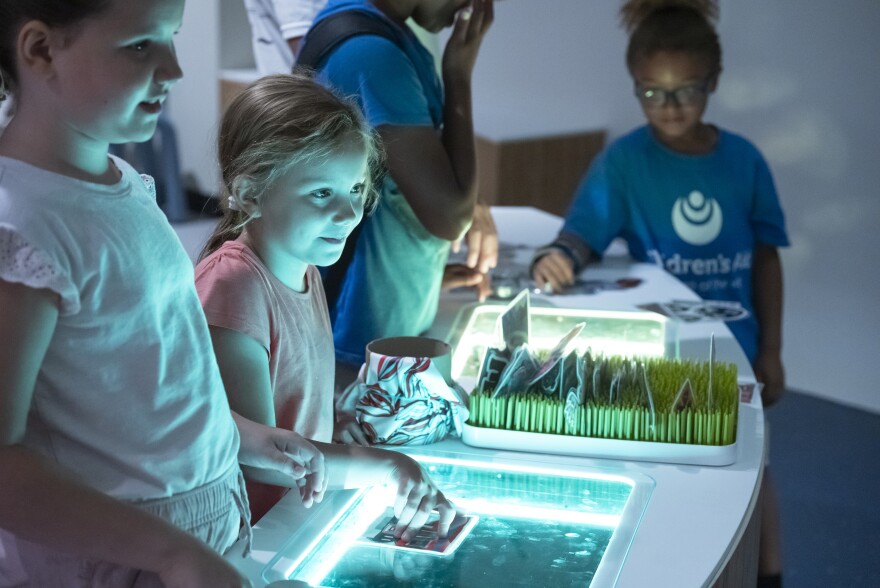Education is part of the mission of most art museums. Programs usually help kids learn things like how to look at a painting, how to draw or the biographies of certain artists.
But the Metropolitan Museum of Art in New York is trying something new: a 3,500-foot science play space that helps children understand the materials used to make art.
At first glance, science education might not seem like a natural fit for an arts institution. But Heidi Holder, chair of the Met's education department, has overseen the project and begs to differ.
"The Met is a science institution," she said recently. "We have three big parts of ourselves: our scientific research, our conservation and our art."

Not only is science used to help conserve precious objects, she said, but it's also used to better understand the art itself. "Say an art object comes in. You can't just look at it and say it's made of clay. It kind of looks that way. But it was made 500 years ago. You don't know what they mix to make the substance. "
Because science is so important to the contemporary understanding of art, the museum decided to turn its former library space on the ground floor — most often used for the Met's beloved story time — into the 81st Street Studio, a place where children could interact with basic materials. Currently, the studio is focused on wood.
Panels near the entrance display wood in many forms — including tree trunk slices, corrugated cardboard, shingles and a carved wooden screen.
"You can touch wood [here]," she said. "You can go right up to it and kiss it."
This is what most differentiates the studio from the museum upstairs: children ages 3 to 11 are encouraged to interact with objects.
Adam Weintraub, one of the principal architects of KOKO Architecture + Design, which created the space, said, "It's important that the kids could touch things, could smell things, could listen to things that we have."
Experts at Yamaha, he said, developed original instruments — their own takes on a marimba, on a kind of calliope, on castanets. Pillows on an artificially grassy hill are stuffed with scents like lemon and pine. There's the cozy circle underneath a feature he called the "komorebi tree" with dappled light that changes according to the time of day and eventually the seasons.

Then, there is the advanced technology used to encourage children to play with the physics of light. When a child places an image from the Met's collection on a special screen, it's projected onto the wall as a 2-dimensional figure. But some twisting of dials makes the light shift and the shadows move, creating a 3D effect.
Another station makes instant copies of a child's drawings and projects them onto a table, where they can be flipped or the colors can be changed.
The 81st Street Studio is free to all and doesn't require a reservation; children and their grownups are welcome to drop in.

The kids who visit, of course, don't know that they're learning about light or the physical properties of wood. They think they're playing. But that's fine, the museum says.
"We are hoping that it will occur to some children to ask us questions about what they're playing with," said Patty Brown, a volunteer. "We are not going to be didactic about it or heavy-handed because they will never want to come back. But there will be the odd child who will ask questions."
And if they do, she said, she and the other volunteers will help the family connect what they're touching in the play space with what they see upstairs in the larger museum — giving them a hands-on understanding of art.

Audio and digital story edited by Ciera Crawford.
Copyright 2024 NPR. To see more, visit https://www.npr.org.



